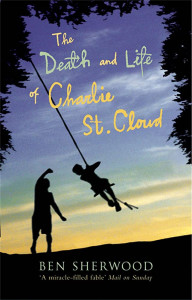 “What happens after a person dies?” Countless theologians, scientists, philosophers and everyday people have asked this question throughout the ages. The ancient Greeks believed that there was only one place to go when you died, the Underworld. Buddhists believe that you would ascend to a higher plane of existence if you had lived a fulfilling and enlightened life, or would relive life as a lesser being should you sin. Dante wrote a book explaining how, depending on which deadly sin predominantly motivated your actions, there was a special level of Hell and a deliciously elaborate and original punishment just for you. Some people believe you just pop out of existence, that nothing happens, that the soul is completely immaterial and instantly destroyed once a person’s heart stops beating.
“What happens after a person dies?” Countless theologians, scientists, philosophers and everyday people have asked this question throughout the ages. The ancient Greeks believed that there was only one place to go when you died, the Underworld. Buddhists believe that you would ascend to a higher plane of existence if you had lived a fulfilling and enlightened life, or would relive life as a lesser being should you sin. Dante wrote a book explaining how, depending on which deadly sin predominantly motivated your actions, there was a special level of Hell and a deliciously elaborate and original punishment just for you. Some people believe you just pop out of existence, that nothing happens, that the soul is completely immaterial and instantly destroyed once a person’s heart stops beating.
Ben Sherwood, the author of The Man Who Ate the 747, presents us with his own interpretation of life and death, in the aptly titled The Death and Life of Charlie St. Cloud. The story is introduced by devoutly religious fireman Florio Ferrente, who is the first on the scene of a horrible car wreck, and the first to try to save 15-year-old Charlie St. Cloud and his 12-year-old brother Sam. Charlie is brought back from the brink, but Sam isn’t so lucky. Fast-forward 13 years. In his New England hometown of Marblehead, Charlie is now the caretaker of Waterside Cemetery. His daily routine includes overseeing the maintenance of tombstones, digging graves, and at the end of the day, playing catch with his kid brother Sam. After being resuscitated, Charlie had been given the gift of interacting with the spirits of the dead within the confines of Waterside, so the fact that Sam passed away 13 years ago does little to tarnish the reality of their nightly game. Charlie has been slavishly coming to every game, every night since his brother’s funeral, sacrificing his own desires and dreams in the process.
That is, until he meets Tess, an ambitious daredevil sail-maker with dreams of circling the globe in her very own boat. After foolishly aiming her trusty vessel into a storm to desensitize herself to the rigours of her upcoming sailing trip, she wrecks her boat and returns to the Waterside Cemetery to apologize to her father, who is buried there, for her recklessness. It is there that she meets Charlie, and the two hit it off. However, nothing is as it seems, and both Sam and Charlie are forced to re-evaluate their bond to one another.
For an author who incorporates such vivid and original ideas into this novel, Ben Sherwood writes in a disappointingly unoriginal and predictable manner. The novel is drenched in cliched expressions. Occasionally, this is effective in maintaining the comforting, close-knit atmosphere of his small town setting, making the story seem as familiar as an old, beloved baseball glove. Most of the time, however, the gooey melodrama is spread a little too thickly, or else it’s been heard before a hundred times in countless other stories. Think of The Sixth Sense — as written by Walt Disney.
That’s not to say his tale isn’t interesting. Sherwood fills the story with some oddball characters, and even people who appear once in the novel are given a sufficient introduction and back-story before they fade back into obscurity. His setting is well realized, a mixture of modern convenience and old-fashioned tradition. He is somewhat confusing when he dips into heavy sailing jargon or complicated medical terms with Tess and Charlie’s adventures, and because of that several parts of the story can be difficult to understand.
In summary, this book is warm, cozy, and predictable, like a Lifetime movie-of-the-week you’ve seen a dozen times. A good choice for a library run, but not re-readable enough to make it a permanent addition to one’s book collection. It’s a nice little novel to curl up with on a rainy day, but not one to necessarily philosophise over.
(Bantam, 2004)
